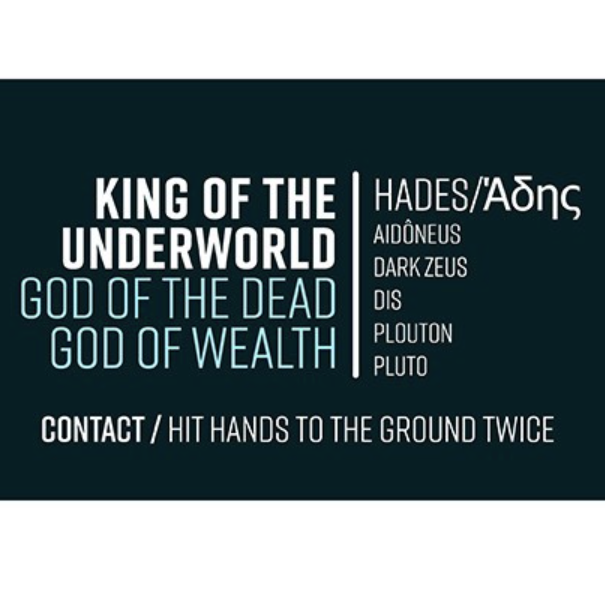Gallery
Welcome to The Gallery.
Immerse yourselves in the vast world of Lore Olympus. In here, you’ll find Easter Eggs, Callbacks, Parallels, and a lot more!
The Gallery is a collective effort by numerous contributors. To know more about the team behind PomegraNet, click here.
Honey and Bees in Ancient Greece
In Ancient Greece, honey and bees were associated with the Underworld. Various Greek philosophers even believed that humans could be reincarnated as bees, or that bees are the souls of humans who had not yet been born. Above is an image of a Greek coin depicting a bee. In Lore Olympus, Persephone is seen snacking on honey in Episodes 54 and 130.
Pomegranate Tree in Ancient Tartarus
In some versions of the myth, Hades tricked Persephone into eating six Pomegranate seeds so she’s bound in the Underworld for six months of the year. The pomegranate is also known as “the fruit of the dead.”
Athena’s Helmet
As the Goddess of Wisdom and Battle Strategy (supposedly the opposite of Ares), Athena is often depicted as a glorious warrior goddess with her armor, helmet, and spear.
Persephone’s Suitors
In myth, Persephone had many suitors who offered gifts exchange for her hand: Apollo, Hermes, Hephaestus, and Ares. Each of their gifts was rejected by Demeter.
Shooting Star
In myth, especially Ancient Greek, the stars were heavily associated with the gods, demigods, and heroes.
Aetna
Aetna could represent many things. One, a modern version of Hephaestus’ automatons, metal people (& animals) he crafted were as real as living beings. Two, Mount Etna is often associated with Hephaestus. It is said to imprison the monstrous Typhoeus, who also arbitrated a land squabble between Hephaestus and Demeter. Three, the eyes on screens could be a nod to the many cyclops who worked for Hephaestus in the myths. Eyes also symbolize perception and vigilance, access to forbidden knowledge, and surveillance.
Hebe as the Cupbearer for Gods and Goddesses
In Mythology, Hebe is the cupbearer of the gods and goddesses in Olympus apart from being the Goddess of Youth. In Episode 29, we see Hebe serving and conjuring drinks for her parents, Hera and Zeus.
Helm of Hades
In Mythology, Hades is also known as the “Unseen One.” He owns a cap of invisibility, otherwise called “Helm of Hades”, which allows any wearer of it to become invisible.
Hades’ Invisibility Cloak
In Mythology, Hades is also known as the “Unseen One.” He owns a cap of invisibility, otherwise called “Helm of Hades”, which allows any wearer of it to become invisible. A reference to the cap is also found in Episode 6, when Persephone was exploring his house.
Hermes’ Winged Sandals
In Mythology, Hermes owns a pair of winged sandals (Talaria). This is associated with his ability to be able to fly and travel quickly.
Laurel Leaves
Daphne conjures laurel leaves around Thanatos’ head. In Mythology, she gets turned into a laurel tree.
Persephone’s Bow
Persephone’s bow is similar to hairstyle of the “Head of Aphrodite” (The Barlett Head) sculpture.
Food in Rows of Six
When Hades transported Persephone in his illusion room, the food he served her were in rows of six. In some versions of Persephone’s myth, Hades fed her six pomegranate seeds, making her bound in the Underworld for six months of the year.
“Proserpina”
While at the clinic, the nurse and staff address Persephone as “Proserpina.” Proserpina or Proserpine is the Roman name for Persephone.
Hera’s Peacock Brooch
Hera is seen wearing a peacock brooch. In mythology, the peacock is an animal sacred to the goddess Hera.
Athena’s Owl
During the TGOEM meeting, an owl is seen on Athena’s shoulder. In mythology, the owl is an animal that is sacred to Athena.
“Stomp on a pest”
Minthe says “to stomp on a pest” when Thanatos asked her where she’s going. Depending on the version of mythology, Minthe gets stomped on by either Demeter or Persephone after she got turned into a plant.
Caduceus Symbol
The caduceus symbol, or the “staff of Aesculapius” is found in the healing packet Apollo used to treat Persephone’s hand. The staff in the symbol is something that Hermes carries. In one myth, the staff was a gift from Zeus, entwined with ribbons, which were replaced by snakes Hermes have prevented from fighting. In another version, the symbol is for Aesculapius, the demigod for Medicine.
Dis Pater on Hades’ business card
Hades’ many names are listed on his business card. One of them is his Roman name: “Dis Pater” which literally translates to “Rich Father”




















